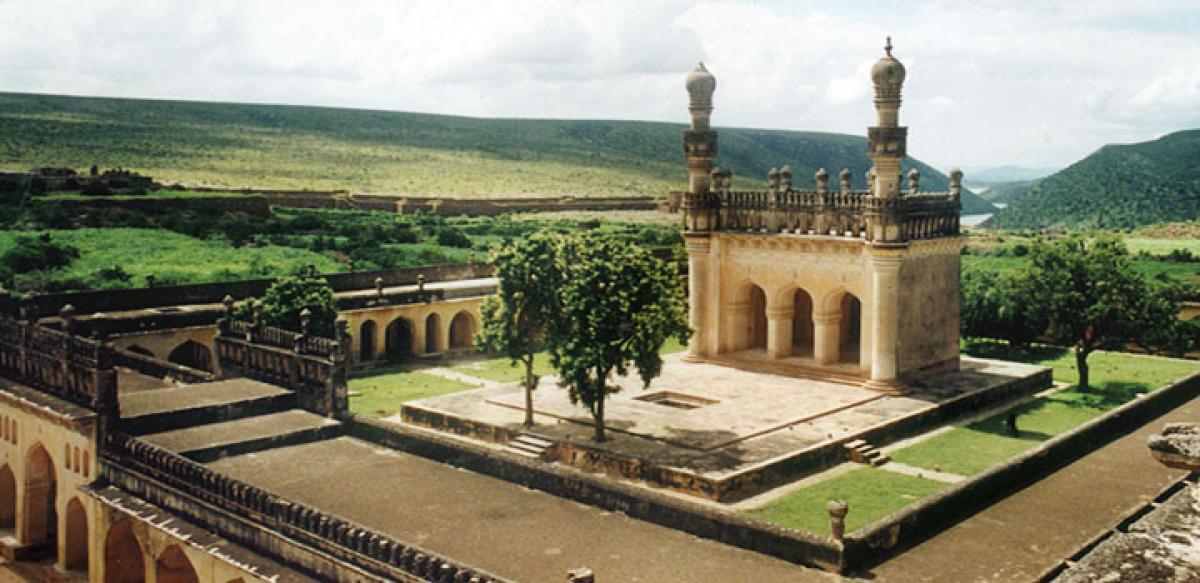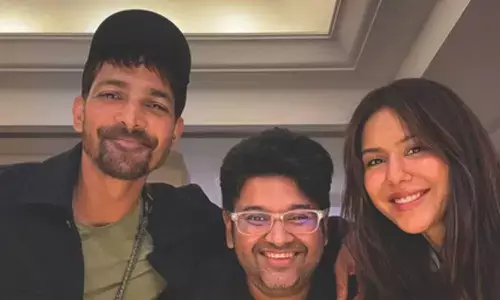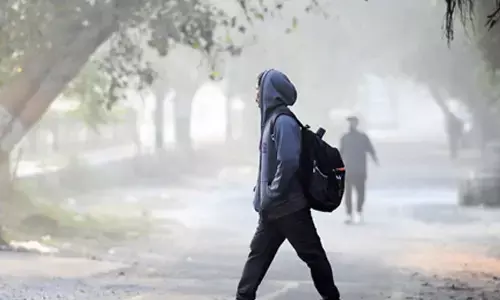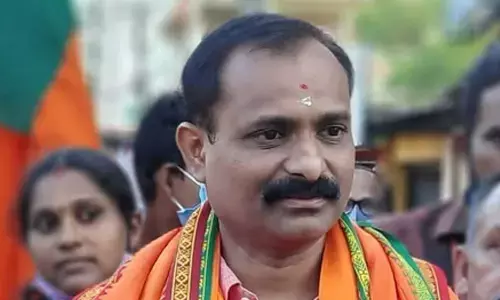An enchanting place indeed

India has a rich history; however, the relics are not properly protected and are not carefully preserved at most of the places. A book on Gandikota Fort, Kadapa, throws light on the grandeur of the majestic fort
.jpg)
We have commendable history but we lack a historical sense. Hundreds of dilapidated temples and scores of ruining forts in every district across the country remain a proof to it. A recent book on Gandikota, a fort in the district of Kadapa, Andhra Pradesh by Thavva Obul Reddy, a young writer, makes a humble attempt to infuse historical sense into the intelligentsia though in a small but credible and authentic way.
Gandikota is a fort situated by the side of the river Penna 14 km away from Jammalamadugu. According to the records Gandikota Fort was constructed by Kakarajum who was a king in the dynasty of Kalyani Chalukyas ruled by Thrailokyamalla, the first Someswara on January 9, 1123 AD.
During the Kakatiya Period, it was ruled by their commanders and afterwards by the emissaries of the Vijayanagara Kings. Then it was ruled by the kings of Pemmasani for more than three centuries. In one of his padyams Vemana, the great poet of the 19th century says that none had the guts to fight with Chinathimma Naidu, the great horseman of Pemmasani dynasty.
It came under the rule of the Nawabs of Golconda when Mir Jumla, the Commander of Abdul Quli Qutb Shah, treacherously occupied it on August 25, 1652. Then it was ruled by many Muslim kings like Abdul Nabi Khan, Abdullah Mohammad Khan, Mahana Miyya and finally Haidar Ali of Mysore. Tippu Sultan kept a battalion of soldiers there. When Tippu Sultan was defeated by the British in 1791 it was occupied by Captain Little. The British rulers got the cannons of the fort melted and that iron was exported it to England.
.jpg)
Gandikota Fort was built on a hill within three stone built compounds and a trench. It has two entrances on the east and west. It has 101 towers, which were used for the cannons. The doors of the entrances have iron doors with huge knobs. On the entrance door there is a house for the drum, which was beaten to alarm the army at the time of the war. Near the entrance of the fort there is a sentry post of four stories called Charminar.
The prison situated near Charminar stands as a witness to the horrible punishments meted out to many prisoners. The majestic Jama Masjid with its towers and wide platforms remains as the main attraction even now. The huge lake in front of the mosque ‘Red Koneru’ as the people still believe that the waters of it turned red when the swords used in the wars were cleaned in it. There is a big two storied granary in the fort. The huge lake called Rayalacheruvu constructed with stones provides water to the fields with in the fort even today.
The Pemmasani rulers of Gandikota took much interest in literature and sponsored many poets like Chennamaraju, Chithrakavi Peddana, Chithrakavi Anantha, Muddaraju Ramana and Mudiyam Venkataramana. Annamacharya the 15th century saint-poet composed many samkeerthanas on the gods of Gandikota fort which illustrate that he visited all those temples.
The French traveler, Tavernier, a diamond merchant came to Gandikota seeking a letter of introduction to Abdullah Qutb Shah, the Nawab of Golconda from Mir Jumla, the then ruler of Gandikota and stayed there for 15 days from September 1, 1652.
In his famous travelogue, ‘Travels in India’, he recorded his observations. He wrote, “On the first day of September we made only six leagues and halted at Gandikota. Only eight days since the Nawab had taken this town after a three months’ siege, and he would not have taken it but for the aid of some Frenchmen who had quit the Dutch service on account of the treatment they had received… Gandikota is one of the fortified towns in the kingdom of Carnatac.
It is built on the summit of a high mountain, and the sole means of access to it is by a very difficult road, which is only 20 or 25 feet wide, and in certain parts only 7 or 6; the Nawab was then commencing to improve it. On the day we arrived the whole army was encamped at the base of the mountain in a plain, where there is a very fine river, and the Nawab was just ending the review of the cavalry, which were very smart.”
Then Tavernier lauded the hospitality of the Nawab and described the way that he examined and punished the criminals.
Gandikota is only one among the innumerable historical places in the district of Kadapa. It is a district where sages like Vemana and Pothuluri Veerabrahmendra Swamy were born. It was in this district that Allasani Peddana and Annamacharya were also born, and Pothana, the poet of Bhagavatham might have at least lived here for a few years.
Thavva Obul Reddy’s book asserts the importance of the writing and publication of such books on various aspects like history and culture of the district.
By:Madhurantakam Narendra
(The writer is a bilingual short story writer, novelist and poet, writing in both Telugu and English)
















